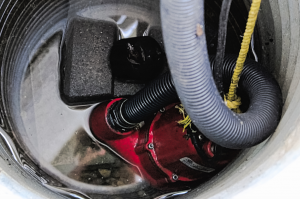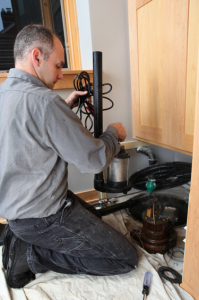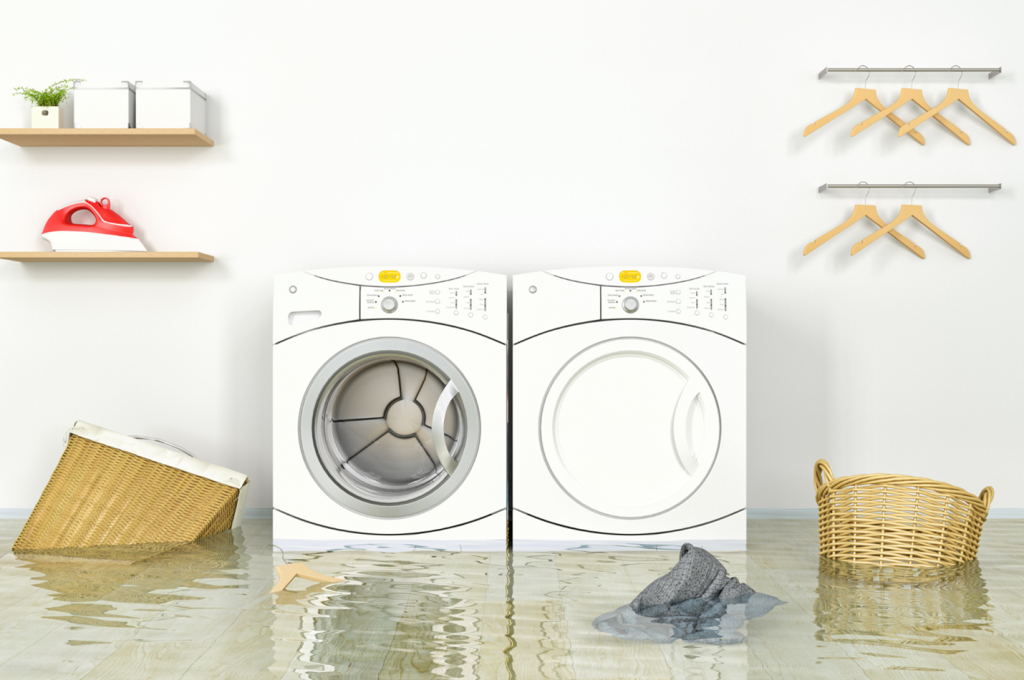Water damage caused by a failed or malfunctioning sump pump can be among the worst a homeowner ever deals with. When sump pumps fail, it often leads to significant and sudden water intrusion that can have devastating effects on building materials and personal property. By following these sump pump maintenance tips, you can help ensure your basement stays dry.
What is a Sump Pump?
 Typically installed in homes with basements, a sump pump protects your home from rainwater intrusion by draining the area around the foundation and directing water away from the house, often into storm sewers or a drainage ditch. The sump pump itself is installed in a pit at the lowest point of the basement with a pipe that leads up and out of the home. Not every home has a sump pump, and the decision to include one is typically determined by the soil and grade surrounding your home as well as your regional climate. Here in Northeast Ohio, our soil conditions (which includes a large amount of clay) and precipitation often leads many homeowners in install a sump pump to protect their basements and foundations against ground moisture.
Typically installed in homes with basements, a sump pump protects your home from rainwater intrusion by draining the area around the foundation and directing water away from the house, often into storm sewers or a drainage ditch. The sump pump itself is installed in a pit at the lowest point of the basement with a pipe that leads up and out of the home. Not every home has a sump pump, and the decision to include one is typically determined by the soil and grade surrounding your home as well as your regional climate. Here in Northeast Ohio, our soil conditions (which includes a large amount of clay) and precipitation often leads many homeowners in install a sump pump to protect their basements and foundations against ground moisture.
Types of Sump Pumps

There are two main types of sump pumps—submersible and pedestal. Submersible sump pumps are installed in the sump pump pit, usually submerged in some amount of water at all times. A float is attached to an arm on the pump that rises with the water level, as water trickles in from the foundation drains. Once the float rises high enough, the pump cycles on and empties the pit. Pedestal pumps work a little differently. The pump of a pedestal pump sits in the sump pit, but the motor sits outside the pit, where it can stay dry.
In addition to these, there are also backup sump pumps, which are smaller pumps that are installed above the primary sump pump. These only activate if the primary pump fails, so they are typically smaller and less powerful.
Because heavy rainstorms often result in power outages, sump pumps are typically equipped with battery backups. These provide enough power in a pinch to keep your basement from flooding during a temporary outage.
How Sump Pumps Fail
 When sump pumps fail, it tends to be for one three reasons. First, like any mechanical thing, sump pumps simply wear out over time. They have moving parts that break or corrode with age. After all, they are sitting in water, and depending on how much water your foundation drains, they may be working hard to keep your basement dry. On average, you can expect a sump pump to last about 10 years, give or take.
When sump pumps fail, it tends to be for one three reasons. First, like any mechanical thing, sump pumps simply wear out over time. They have moving parts that break or corrode with age. After all, they are sitting in water, and depending on how much water your foundation drains, they may be working hard to keep your basement dry. On average, you can expect a sump pump to last about 10 years, give or take.
Another common reason sump pumps fail is because they lose power. More often than not, this happens during a strong storm that knocks the power out. Unfortunately, strong storms typically equate to heavy rains. A power outage that causes your sump pump to lose power can lead to a flooded basement. In some cases, sump pumps lose power when a family member (usually a child or pet) unknowingly unplugs or turns off the power.
Finally, sump pumps can fail when they are unable to keep up with the amount of water flowing into your basement. This can happen for several reasons. An unusually heavy rain, especially during a time when the ground is already saturated, may cause more water to drain into your foundation than your sump pump was designed to carry away. We call this rare event an act of God storm. If your pump is commonly overwhelmed during heavy (but not extraordinary) storms, it’s a sign that the land around your home is not properly graded to appropriately direct water away from your home. It may also be a sign that your sump pump is simply not powerful enough to handle the flow of water, in which case you’d need to upgrade to a more powerful model.
Sump Pump Maintenance Tips
 Despite how hard sump pumps work to keep basements dry, most homeowners tend to forget about them until they’re dealing with the soggy mess of a failed unit. Following these sump pump maintenance tips can help keep you dry the next time it rains.
Despite how hard sump pumps work to keep basements dry, most homeowners tend to forget about them until they’re dealing with the soggy mess of a failed unit. Following these sump pump maintenance tips can help keep you dry the next time it rains.
Check the Power Source
Put simply, sump pumps need power to work. Whether drawing from your home’s electricity or from a battery backup in the event of a power outage, they can’t do their job if they don’t have any juice. One of the most important sump pump maintenance tasks is to routinely confirm your sump pump has power. Verify that the GFCI outlet is not tripped (as a side note, your sump pump should be on a GFCI outlet) and that the battery backup has a charge. We recommend replacing these batteries every 2-3 years.
Regularly Test Your Sump Pump
A failed sump pump often spells disaster because the only time we know they’ve failed is when we really need them to work. To make sure your sump pump is ready for Northeast Ohio’s next big rainfall, make sure to regularly test your pump by pouring a bucket of water into the sump pit. The float should raise the arm, and the pump should switch on and be able to clear the water in a matter of seconds. If the pump doesn’t turn on, or if the pump drains the pit slowly, it’s a sign that something’s wrong with your sump pump. If you discover an issue with your sump pump, you’ll want to immediately address the issue by either repairing or replacing the unit.
Clean Your Sump Pump
Water that trickles down through your foundation drains and into your sump pump pit is often carrying a fair amount of dirt, silt, and minerals with it. To prevent this dirt from jamming up your sump pump, regularly disconnect your sump pump from its power source and thoroughly clean all accessible parts. This includes removing the grate at the bottom of the pump to remove any dirt or sediment that may have collected underneath it. We recommend checking your model’s owner’s manual for specific cleaning instructions, but most pumps can be safely and efficiently cleaned with a garden hose, a stiff-bristle brush, and paper towels.
Aapex Construction & Restoration is Your Trusted Water Restoration Contractor!
Are you dealing with a wet basement? Aapex Construction & Restoration specializes in insurance and non-insurance restoration projects. With more than 20 years of experience in the industry, our mission is to provide exceptional customer care from start to finish as we mitigate the damage and return your home to pre-loss conditions. We advocate for you with your homeowner’s insurance company, documenting every step of the process and helping to ensure you receive every dollar you are owed in coverage. Contact us today for a free consultation.
Related Articles
Commonly Overlooked Warning Signs of Water Intrusion
Water in Your Basement: Sources and Solutions
Things to Know Before Hiring a Water Damage Restoration Contractor
